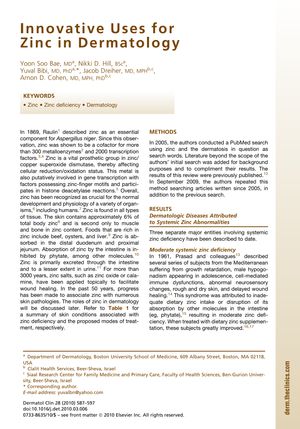Innovative Uses for Zinc in Dermatology
May 2010
in “
Dermatologic Clinics
”

TLDR Zinc can be a helpful secondary treatment for certain skin conditions, but more research is needed to guide its use.
The 2010 document reviewed the role of zinc in dermatology, suggesting that while it is not a primary treatment for most skin conditions, it can be a useful second-line option, especially when first-line treatments are not suitable. Zinc has been found to be beneficial as an adjunct treatment for acne vulgaris, chronic verrucae, and chronic cutaneous ulcers, and has shown potential in treating rosacea, seborrheic dermatitis, hand eczema, and cutaneous ulcers. The efficacy of zinc varies depending on the compound and preparation used, with zinc sulfate being more effective for acne and zinc oxide for chronic ulcers. The studies cited, including randomized controlled trials, often have small sample sizes or are case reports, indicating a need for more extensive research to establish clear guidelines for zinc's use in dermatology.



